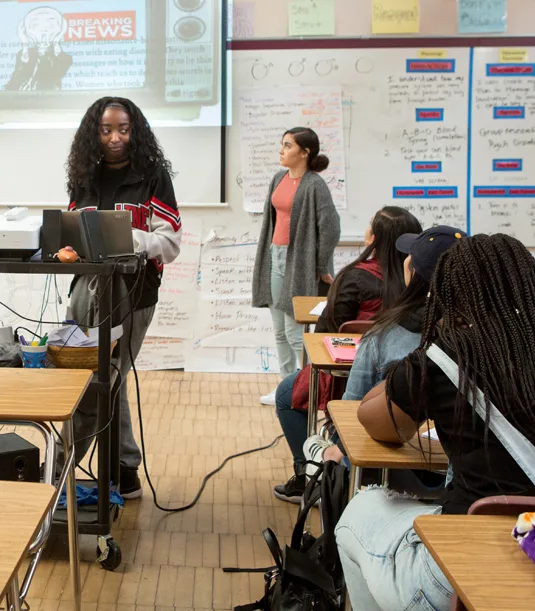Unlocking Potential: A State Policy Roadmap for Students with Disabilities
Expanding Access to College in High School Programs for All Students
Students with disabilities deserve the same opportunities to explore college-level learning while in high school as any of their peers. Yet across the country, these students remain significantly underrepresented in dual enrollment, concurrent enrollment, and early college programs.
To help states close this gap, the College in High School Alliance (CHSA) has released Unlocking Potential: A State Policy Roadmap for Equity and Quality in College in High School Programs for Students with Disabilities. This new roadmap offers actionable state policy strategies to ensure every student—regardless of ability—can access and succeed in high-quality college in high school opportunities.
Why This Roadmap Matters
More than 12% of U.S. students receive special education services, but they make up fewer than 4% of dual enrollment participants. These persistent inequities reflect long-standing misconceptions about the potential of students with disabilities. Research shows that with the right supports, the vast majority of these students can meet the same academic standards as their peers—and thrive in college-level coursework.
This roadmap provides states with a clear, equity-driven policy framework to eliminate barriers, raise expectations, and design inclusive college in high school systems that work for everyone.
Six Policy Areas for State Action
CHSA’s roadmap identifies six interconnected levers for equitable reform:
-
Equity Goals & Public Reporting – Establish statewide participation and success goals for students with disabilities and ensure transparent, disaggregated data reporting.
-
Program Integrity & Credit Transfer – Strengthen oversight, cross-sector coordination, and articulation of credits for students with disabilities.
-
Finance – Address cost barriers by leveraging IDEA, Perkins, and Vocational Rehabilitation funds to support needed services and accommodations.
-
Course Access & Availability – Ensure eligibility, outreach, and transition planning include students with disabilities at every stage.
-
Instructor Capacity – Support educators with training and collaboration between K-12 special education and higher-ed disability resource staff.
-
Navigational Supports – Provide tailored advising and guidance to help students successfully transition into and through college in high school programs.
Driving Systems Change
Unlocking Potential challenges state leaders to move beyond compliance and intentionally design policies that promote access, inclusion, and success. From transparent accountability systems to accessible program design, this roadmap outlines concrete steps for policymakers, practitioners, and advocates to ensure students with disabilities are not left behind in the growing dual enrollment movement.
About the Author
This report was authored by Karla Phillips-Krivickas of Think Inclusion and KnowledgeWorks. Special thanks to John Fink from the Community College Research Center for his partnership with CHSA in developing the first analysis of access by students with disabilities to college in high school programs, drawn from the Civil Rights Data Collection. For more of John’s data work on dual enrollment access by race, gender, disability status, and English Language Learner status, click here.


